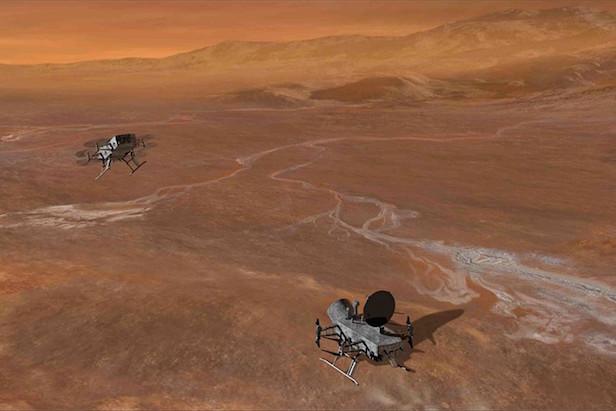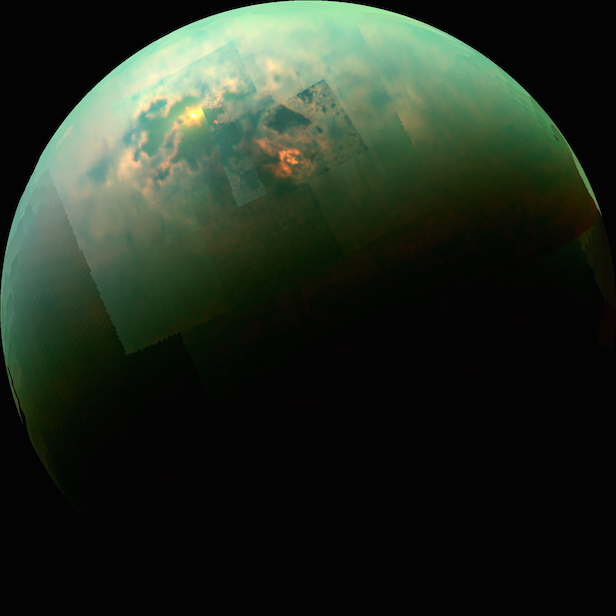‘Dragonfly’ drones could explore Titan’s surface
This mission has been proposed to NASA as the fourth expedition of their New Frontier program

The Dragonfly dual-quadcopter could undergo multiple flights, exploring a wide terrain of Titan. Image credit: JHUAPL/Mike Carroll
The John Hopkins University’s Applied Physics Laboratory (APL) has submitted a proposal to NASA for the next New Frontier’s mission, which is designed to explore Saturn’s largest moon Titan. This exciting prospect would employ an instrumented, nuclear-powered dual-quadcopter dedicated to examine multiple regions of the moon’s rousing surface.
Titan has been the subject of much intense research for decades, as it is the only moon in the Solar System with an atmosphere. So in 2004, the Huygens probe detached from the Cassini spacecraft, plummeted through the moon’s thick, orange atmosphere and analysed the surface. The results showed diverse, carbon-rich compounds on a surface dominated by water ice, as well as an ocean of liquid methane. These seas of organic materials are thought to undergo similar weathering processes to Earth, so by studying Titan, it could reveal that that processes are not confined to our planet.
For this to happen, APL has proposed to capitalise on the recent advances in drone technology. Additionally, with Titan’s dense atmosphere and low gravity, it would make flight immensely easier than on Earth. By safely travelling to, and landing on, multiple locations, Dragonfly could sample a wider terrain. There would be instruments onboard the drone, designed to probe the habitability of the environment, and examine the surrounding chemistry. The four instruments would include a mass spectrometry, Gamma-ray spectrometry, Meteorology and Geophysics sensors and a camera suite.

A mosaic image that reveals the sunlight shimmering off Titan’s north pole seas of liquid hydrocarbons. Image credit: NASA/JPL-Caltech/University of Arizona/University of Idaho
“We could take a lander, put it on Titan, take these four measurements at one place, and significantly increase our understanding of Titan and similar moons,” explains Paul Bedini, project manager of the Dragonfly mission. “However, we can multiply the value of the mission if we add aerial mobility, which would enable us to access a variety of geologic settings, maximizing the science return and lowering mission risk by going over and around obstacles.”
NASA is expected to select a few New Frontiers mission proposals later on this year. These few proposals will undergo further study, which will validate their potential, and the chosen mission is expected to launch in 2019.
Keep up to date with the latest space news in All About Space – available every month for just £4.99. Alternatively you can subscribe here for a fraction of the price!




